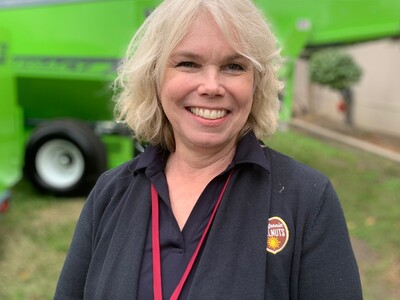4-H Program Cuts & Vilsack Talks Home Loans
4-H Program Cuts & Vilsack Talks Home Loans plus Food Forethought. I’m Greg Martin with today’s Northwest Report.
Agriculture Secretary Tom Vilsack has announced that the U.S. Department of Agriculture is launching a pilot program to help rural borrowers refinance their mortgages to reduce their monthly payments.
VILSACK: The PResident during his State of the Union speech articulated the need and the desire to try to provide homeowners across the country who are struggling with a difficult economy to have a bit more freedom with their paychecks and their monthly income b y enabling homeowners across the country to consider refinancing their home loan. We are announcing today USDA’s effort in this area by offering a loan finance opportunity to rural residents with loans that were either issued or guaranteed by USDA Rural Development.
Washington’s King County has cut funding for the local 4-H club. It is only one of a 11 counties in the country which have pulled their support for the youth program. 4-H serves 10,000 kids in King County but budget cuts have led county officials to cease funding the program which teaches kids a lot more things than ag related subjects. It costs King County about a $100,000 a year to fund the program. That's $10 a kid. The Washington State University Extension service has donated enough money to keep the program going until September, but the club is being told to close-up its operation.
Now with today’s Food Forethought, here’s Lacy Gray.
Here’s an interesting idea, instead of having a refrigerator the size of a small car in your kitchen how about whittling it down to file cabinet size? Sounds crazy, but that’s exactly what some people are doing in an effort to “get back in touch” with their food while saving space, money, and ultimately food. Be honest, how often do you loose track of what food is in your fridge, or can’t identify it when you do find it hidden in a back corner on the bottom shelf? Many people would be surprised to learn that the majority of their food doesn’t really need to be kept in the refrigerator, it just needs to be kept in the proper manner. Most fruits and vegetables would fair better not being put into the fridge. Our grandparents and great grandparents relied on traditional techniques for food storage, such as keeping root vegetables in a box in a well ventilated and cool dry basement or root cellar, and onions in open weave baskets. Bananas, citrus fruits, melons, and winter squash were stored at room temperature, and even before they knew about ethylene, people knew to store their fruits and veggies separately, otherwise they ended up with rotten produce.
Thanks Lacy. That’s today’s Northwest Report. I’m Greg Martin on the Ag Information Network.















